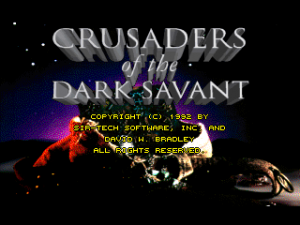It’s been a busy few months–I’ve been juggling multiple projects across multiple media and haven’t had the opportunity to blog much. I’ll be at the Game Developer’s Conference next week and hope to see some of y’all there. In the meantime, here’s a quick and dirty examination of an important subject: designing stories for nonlinear game segments. In other words, side quests.
Category Archives: Writing
Player and Player Character Motivation in Video Games
We’ve touched on player motivation before, but let’s briefly give it our full focus. Boiled down to a simple statement, bridging the gap between player motivation and player character motivation is one of the the most important factors in a game narrative’s success.
(Success, in this case, being shorthand for “ability to elicit the desired audience reaction,” which should be broad enough to cover both “making the player cry” and “increasing the player’s engagement with the game setting and thereby the player’s willingness to spend money on microtransactions.” We’ve got a big tent on this site, with room for everyone.)
In traditional storytelling media, writers are concerned with finding ways to make the audience empathize with the protagonist. And for good reason–even when an audience may not want a given protagonist to succeed at her goals, we should care about her fate and the fate of secondary characters (otherwise, what’s the point?) It’s difficult to care about a character we’re unable to understand or relate to.
In interactive narrative, empathy continues to play a role–but it’s intimately tied to the player’s own motivation. Continue reading
Craft Sessions: Character, Viewpoint, and Audience Sympathy
This is the second in a (very occasional) series of articles dissecting challenges and techniques in game narrative. The first, “Developing Meaningful Player Character Arcs in Branching Narrative,” originally appeared on Gamasutra and is linked from this blog. Shorter game writing missives are available via the Video Game Writing category.
Let’s start with a bold statement and riddle it with clarifications and exceptions as we go:
The more I care about a game’s viewpoint character, the less I care about every non-player character in the game.
The converse–the less I care about a game’s viewpoint character, the more I care about the non-player characters–is basically true as well, albeit with a few more exceptions. Continue reading
Love What You Write, Don’t Write What You Love; or, Be a Hack, Take Every Paying Job, and Maintain Your Artistic Pretensions
There are writers who go their entire careers writing nothing but original, creator-owned material that they’re deeply passionate about. Most of these writers never earn enough money from their writing to support themselves; they maintain other jobs unrelated or tangential to writing no matter how many brilliant novels they publish or awards they win.
Many exceptions exist, of course, but for writers in video games, comic books, and film (so I’m told, anyway–it’s not my medium of choice) in particular, earning a living as a writer means sometimes writing things you didn’t create, you don’t own, and you maybe aren’t that interested in to start with.
The questions of how to approach another creator’s intellectual property and how much to invest emotionally in a project you don’t control are worthy of separate posts, but for now, let’s focus on that last part: writing for a project that doesn’t interest you. Continue reading
Why it Worked: Wizardry VII, In-Game Text, and a Fantasy of Ideas
Even in the early 1990s, Wizardry was something of a throwback. Both the Wizardry and Ultima series–the two great and venerable franchises of computer role-playing games–had begun in 1981, but while Ultima was experimenting with 3D movement (Ultima Underworld) and combat-light, story- and world-interactivity-driven games (Ultima VII, the likes of which has still never been replicated), Wizardry was all about dungeon diving, turn-based combat, maddening environment puzzles, and more character builds and items than you could throw a spreadsheet at.
Wizardry was for the hardcore: the players who grudgingly accepted auto-mapping but wanted the quality of the auto-generated maps to be dependent on the skills of the in-game party members, and who were still willing to keep reams of notes to keep the teleporter puzzles straight. Wizardry was for players who didn’t need fancy graphics or in-your-face storytelling getting in the way of combat. In Computer Gaming World‘s February 1991 preview of Wizardry VII: Crusaders of the Dark Savant, writer Alan Emrich goes on about the appearance of trees in a Wizardry game; understandable, since the seventh installment was the first Wizardry to have a world beyond the dungeon at all.
And while Wizardry may never have broadened its appeal, Wizardry VII was a masterpiece of its combat- and puzzle-heavy subgenre, ceaselessly challenging and immense in scope. For my tastes, it’s a bit too much–too much combat, puzzles fascinating but slightly too insane–and yet it remains a game that entrances me.
Largely because of that odd duck that Wizardry traditionally never spent much time on: the story. Let’s discuss why it worked.
Continue reading
